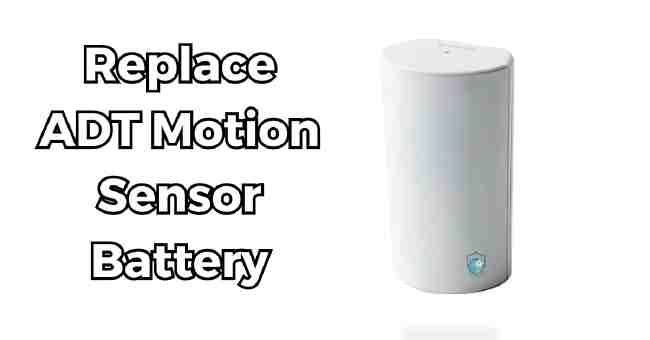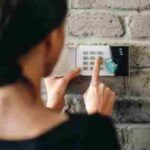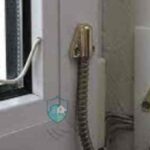Table of Contents
How to Replace ADT Motion Sensor Battery? Yes, If you have an ADT home security system, those handy motion sensors are crucial for detecting movement and potential intruders.
But like any battery-powered device, the batteries in ADT motion sensors eventually run low and need replacing.
Replacing those batteries is thankfully a quick and straightforward process.
In this comprehensive guide, we’ll walk through when and how to replace the batteries in your ADT motion sensors.
We’ll also provide some helpful troubleshooting tips in case you run into any hiccups during the battery replacement process.
Let’s get started!
The Importance of Replacing Your ADT Motion Sensor Battery
The ADT motion detector is a key component of your home security system.
It uses passive infrared technology to detect movement and alert you and the ADT monitoring center of potential threats.
To operate reliably, the ADT motion detector relies on battery power. Usually a single CR123A 3-volt lithium battery powers each sensor.
Over time, this battery will naturally deplete and need replacing, typically every 2-3 years depending on usage and environmental factors.
If you ignore the low battery warnings, the battery may deplete fully, causing the motion detector to stop working.
A non-functional motion sensor creates obvious security vulnerabilities for your home.
Replacing the battery promptly restores your ADT motion detector to full working order.
When to Replace Your ADT Motion Sensor Battery
ADT motion detectors are designed to alert you when their battery runs low. Here are some of the common warning signs that indicate it’s time to replace your ADT motion sensor battery:
- Low battery alert – You may receive a phone call, text message or mobile app notification from ADT indicating a specific motion sensor has a low battery.
- Keypad indicator – A low battery icon or trouble message with a zone number may display on your system’s keypad when a sensor needs new batteries.
- Test mode issues – If a motion sensor doesn’t activate properly when in test mode, despite motion in front of it, the cause may be a depleted battery.
- False alarms – As batteries deplete, you may notice more false alarms from that motion sensor, especially when power goes out.
Many experts recommend proactively replacing your ADT motion sensor batteries every 2-3 years.
But use the warning signs above to gauge whether any of your sensors need new batteries sooner than that timeframe.
Catching a low battery early on gives you time to conveniently replace it before it dies completely.
Before You Replace the Battery
Replacing a battery in an ADT motion sensor only takes a few minutes. But there are a couple preparatory steps to take first for a smooth, hassle-free battery swap.
Putting the System in Test Mode
Anytime you open or remove part of a security sensor, it can trigger tamper alarms and false alarms.
To prevent this, put your ADT security system into test mode prior to replacing the battery.
Test mode temporarily suspends alarm monitoring so you can service devices without causing alarm triggers.
To enable test mode:
- Log into your ADT account online or via mobile app
- Navigate to the “Test” section of your control panel
- Initiate a test mode session up to 4 hours long
- A light on the keypad and beeping indicates test mode is active
Gathering Necessary Tools and New Batteries
Before starting, gather the following items:

- New batteries – Typically CR123A lithium batteries. Match the new batteries to the type and quantity used in that motion sensor.
- Flathead screwdriver – To open the motion sensor housing and access the battery compartment.
- Manufacturer’s instructions – Refer to the user manual for your specific ADT motion sensor model if needed.
With the system in test mode and your replacement supplies ready, you’re all set to change out that dead battery.
5 Steps To Take On How To Replace Adt Motion Sensor Battery
Replacing the battery in an ADT motion detector involves just a few simple steps.
We’ll walk through the complete process:
- Locating the Battery Compartment
- Removing Old Battery
- Inserting New Battery
- Closing Battery Compartment
- Testing Sensor Function
Step 1: Locating the Battery Compartment
ADT motion sensors have a removable cover that provides access to the battery compartment.
This compartment is often secured with a small screw or latch.
Examine the motion sensor and locate the subtle lines indicating the removable cover.
You may need to use the flathead screwdriver to release any latches or screws.
Carefully remove the cover without damaging the sensor. This will expose the battery compartment.
Step 2: Removing Old Battery
Once you can access the battery compartment, go ahead and remove the dead battery inside.
Note the polarity of the old battery before removing it. This helps ensure you insert the new battery correctly later on.
If needed, use your screwdriver to gently pry or lift the battery from the compartment.
Step 3: Inserting New Battery
After removing the old battery, insert the new CR123A or other compatible battery into the compartment.
Double check that you insert the new battery in the proper polarity based on the positive (+) and negative (-) endpoints.
If the motion sensor uses multiple batteries, replace all of them now for optimal performance.
Step 4: Closing Battery Compartment
With the fresh battery(ies) in place, you can close up the motion sensor housing.
First, realign the cover properly over the compartment. Then press down firmly around the edges to snap it back into place.
Finally, refasten the screw or latch if needed to securely close the motion sensor.
Step 5: Testing Sensor Function
The final step is confirming normal operation of the newly battery-replaced motion sensor.
Wait 1-2 minutes after closing up the sensor. Then walk in front of it and watch for the small LED light to briefly activate, indicating motion detection.
You can also check for any remaining low battery warnings on the keypad or mobile app. The warnings should clear after successfully replacing the dead battery.
With that, you’ve renewed your ADT motion sensor with fresh battery power!
Helpful Tips for Hassle-Free Battery Replacement
To ensure optimal performance and avoid issues, keep these battery replacement tips in mind:
- Use the exact correct battery type specified for that motion sensor model. Incorrect batteries can cause malfunctions.
- Pay close attention to proper battery polarity when inserting new batteries.
- Closely follow the manufacturer’s instructions for your specific ADT motion sensor. Models can vary in their battery access and replacement.
- Have spare batteries on hand for a quick swap when needed. Shop for extra motion sensor batteries so you’re prepared.
- Replace all batteries in a multi-battery sensor at the same time for balanced performance.
- Make sure the battery compartment cover is securely closed after replacing the battery to avoid false tamper alarms.
- Test the motion sensor thoroughly after installing the new battery. Verify it detects movement properly in test mode.
Following these battery replacement best practices reduces the chance of any issues or malfunctions after the battery swap.
Troubleshooting Common Battery Replacement Issues
In most cases, swapping out a dead battery in an ADT motion sensor is quick and simple.
But occasionally, you may encounter problems before, during, or after the battery replacement process.
Here are some tips for troubleshooting common battery replacement frustrations:
No Low Battery Warning
If your ADT motion sensor stops working correctly but you didn’t receive any low battery alerts, the battery may have died suddenly.
Try replacing it immediately rather than waiting for a warning.
Sensor Not Detected After Replacement
If the motion sensor still doesn’t work after you replace its battery, it’s likely a connectivity rather than power issue.
Try moving the sensor closer to the ADT panel if it’s too far away to connect properly. Or contact ADT to inspect for faulty hardware.
Continued Issues After Battery Swap
For persistent false alarms or detection failures after replacing the battery, the new battery itself may be defective.
Swap that new battery out for a fresh one. Test the motion sensor again. If problems remain, reach out to ADT support.
Frequently Asked Questions
Below we’ll address some commonly asked questions about replacing ADT motion detector batteries:
What Type Of Battery Does An Adt Motion Detector Use?
The majority of ADT motion detectors use a single 3-volt CR123A lithium battery as their power source.
This style of battery provides long-lasting power in a small form factor that fits conveniently within the motion sensor housing.
Specifically, the CR123A batteries used in ADT motion detectors have a lithium manganese dioxide chemistry.
This battery chemistry has a flat discharge curve, meaning it provides a steady voltage output throughout its lifespan.
That consistent power delivery is important for powering motion sensors that need to remain active 24/7.
While most ADT motion detectors rely on the CR123A battery, some older or specialized models may use CR2032 or even AA alkaline batteries.
The user manual for your specific ADT motion sensor will indicate the correct battery type it requires.
Checking the model number on your existing battery is another easy way to identify the replacement you need.
Just match that model number when purchasing fresh batteries for your ADT motion sensors.
How Do You Put A Battery In An Adt Sensor?
Installing a new battery in an ADT sensor like a motion detector is a quick and simple process:
- Put your ADT system into test mode so that opening the sensor does not trigger false alarms
- Locate the small removable cover on the sensor, usually secured by screws or latches
- Carefully open the cover using your screwdriver to provide access to the battery compartment
- Remove the old battery and insert the new one, ensuring proper polarity by aligning the + and – markings
- For multi-battery sensors, replace all batteries at the same time
- Close the battery compartment cover and tightly refasten any screws or latches
- Take the system out of test mode and walk in front of the sensor, verifying normal motion detection
Following manufacturer’s instructions for your specific ADT sensor model ensures you safely install the new battery for optimal performance.
Avoid forcing anything open or closed on the sensor when accessing the battery.
How Long Do Adt Motion Sensor Batteries Last?
The typical lifespan for an ADT motion sensor battery is 2-3 years before needing replacement.
However, a few factors impact exactly how long your batteries will last:
- Sensor usage – Sensors protecting high traffic areas will deplete batteries faster from more frequent activation. Infrequently used sensors may last longer.
- Environment – Temperature extremes and humidity can accelerate battery deterioration. Sensors in moderate indoor environments will last longer.
- Battery quality – Higher quality lithium batteries generally have greater longevity than cheaper options. Go with name brand CR123A batteries from reputable suppliers.
- False triggers – Frequent false alarms from things like pets can drain batteries faster. Eliminate nuisance motion detections if possible to prolong battery life.
Monitoring your motion sensors for low battery indicators is the best way to gauge when your specific batteries need replacement.
But for most indoor use cases, plan on replacing ADT motion sensor batteries every 2-3 years.
How Do I Reset My Adt Motion Sensor?
If your ADT motion sensor is malfunctioning or not detecting motion properly, resetting it to factory default settings can often resolve issues:
- Remove the motion sensor battery compartment cover
- Locate the small reset button, usually near the battery
- Use a pin or paperclip to press and hold the reset button for 3-5 seconds
- Replace the battery compartment cover
- Walk in front of the sensor to test motion detection
- If the sensor LED activates, the reset was successful
- Re-test the motion sensor in various lighting conditions
- If problems persist after resetting to defaults, replace the battery or contact ADT support
Resetting sensors that are behaving erratically or inconsistently often restores them to normal operation.
Just be sure to re-test them thoroughly after performing a reset.
How Long Do Motion Sensor Batteries Last?
For most motion sensor brands and models, their batteries will last between 1-3 years on average. The actual lifespan comes down to:
- Battery type – Standard alkaline batteries may last just 1 year. Lithium batteries can last 2-3 years.
- Usage frequency – High traffic areas will deplete batteries quicker from frequent activation.
- Environment – Temperature extremes and moisture reduce battery life.
- Quality – Higher quality battery brands generally last longer.
- False triggers – Frequent unnecessary motion detection drains batteries faster.
ADT motion sensors in particular tend to get 2-3 years from a set of lithium CR123A batteries in normal use conditions.
But let the low battery indicators be your guide for when to replace dead batteries in any motion sensor.
Where Is The Adt Battery?
ADT sensors like motion detectors, smoke alarms, and door/window contacts all operate on battery power.
The actual battery location varies slightly depending on the sensor:
- Motion sensors – Inside the main housing, accessed by removing the front cover
- Door/window sensors – Inside the larger segment that mounts on the door/window frame
- Smoke alarms – Underneath the smoke alarm housing, requiring full removal to access
- Key fobs – Inside the fob casing; pried open with screwdriver
- Keypads – Inside the mounting bracket, or external battery backup option
Batteries inside sensors are not interconnected. Each sensor has its own independent battery that must be replaced individually when depleted.
Always follow manufacturer’s instructions to open sensors and locate the battery compartment. Never forcefully pry open sensors as it could break them or trigger tamper alarms.
How Do I Stop Low Battery Beeping On Adt?
That periodic low battery beeping or chirping from your ADT equipment can definitely become annoying. To silence it:
- If it’s coming from a smoke/CO detector, replace its battery immediately for safety.
- For other sensors, put fresh batteries in as soon as possible. This will quiet the low power warnings.
- Open the ADT app and it may show you which sensor needs a new battery based on the beeping notification.
- Check your alarm system keypad for any low battery messages and zone number indications.
- In a pinch, you can temporarily mute low battery alerts and beeping through the ADT app and keypad. But replace the batteries ASAP.
While the beeping reminds you to swap in new batteries, it becomes a nuisance. Replace depleted batteries right away to restore normal, quiet operation of your ADT sensors.
Why Is My Adt Motion Sensor Blinking Red?
When an ADT motion sensor intermittently blinks its small red LED light, it can mean a few different things:
- The sensor is in walk test mode. This mode allows easier motion detection confirmation and LED blinking. Exit walk test mode when done.
- A low battery condition is causing the blinking red light warning. Replace the depleted battery immediately.
- The sensor may be malfunctioning or faulty. Try resetting it to factory defaults. If blinking persists, contact ADT about a replacement.
- There are connectivity issues between the sensor and ADT panel. Relocate the sensor closer to the panel if too far away.
- The sensor is detecting a potential intruder and signaling the alarm panel. Verify it is not a false alarm.
If a new ADT motion sensor recently installed has a blinking red light, it typically means walk test mode is still active.
For existing sensors that suddenly develop blinking, low battery or a fault are the most common explanations.
What Battery Is Best For Motion Sensors?
For optimal performance in motion sensors, lithium batteries are the best choice. Specifically, CR123A 3-volt lithium batteries work extremely well.
Compared to alkaline AA/AAA batteries, CR123 lithium batteries offer:
- Longer lifespan – Typically 2-3 years vs 1 year for alkaline
- Steadier power delivery – Less prone to voltage drops as the battery depletes
- Low temperature tolerance – Performs better than alkaline batteries in very cold weather
- Lightweight and compact – Easy to fit inside motion sensor housing
- Easy to find – Readily available at local retailers or online in multi-packs
The lithium manganese dioxide chemistry of CR123A batteries make their power output very consistent until almost fully depleted.
This steady voltage benefits motion sensors that need consistent sensitivity.
While slightly more expensive upfront than alkaline batteries, lithium CR123A batteries will save you money over time by not needing replacement as frequently.
Their impressive performance makes CR123A lithium batteries the best choice for powering motion sensors.
Conclusion
With this comprehensive guide, you should now feel equipped to smoothly replace dead batteries in your ADT motion sensors. Just be sure to heed those low power warnings, properly enter test mode, use the right battery types, and follow sensor-specific instructions.
Taking a few minutes periodically to swap fresh batteries into your ADT motion detectors helps ensure 24/7 security coverage. Contact ADT with any questions or issues along the way. And stay secure!




